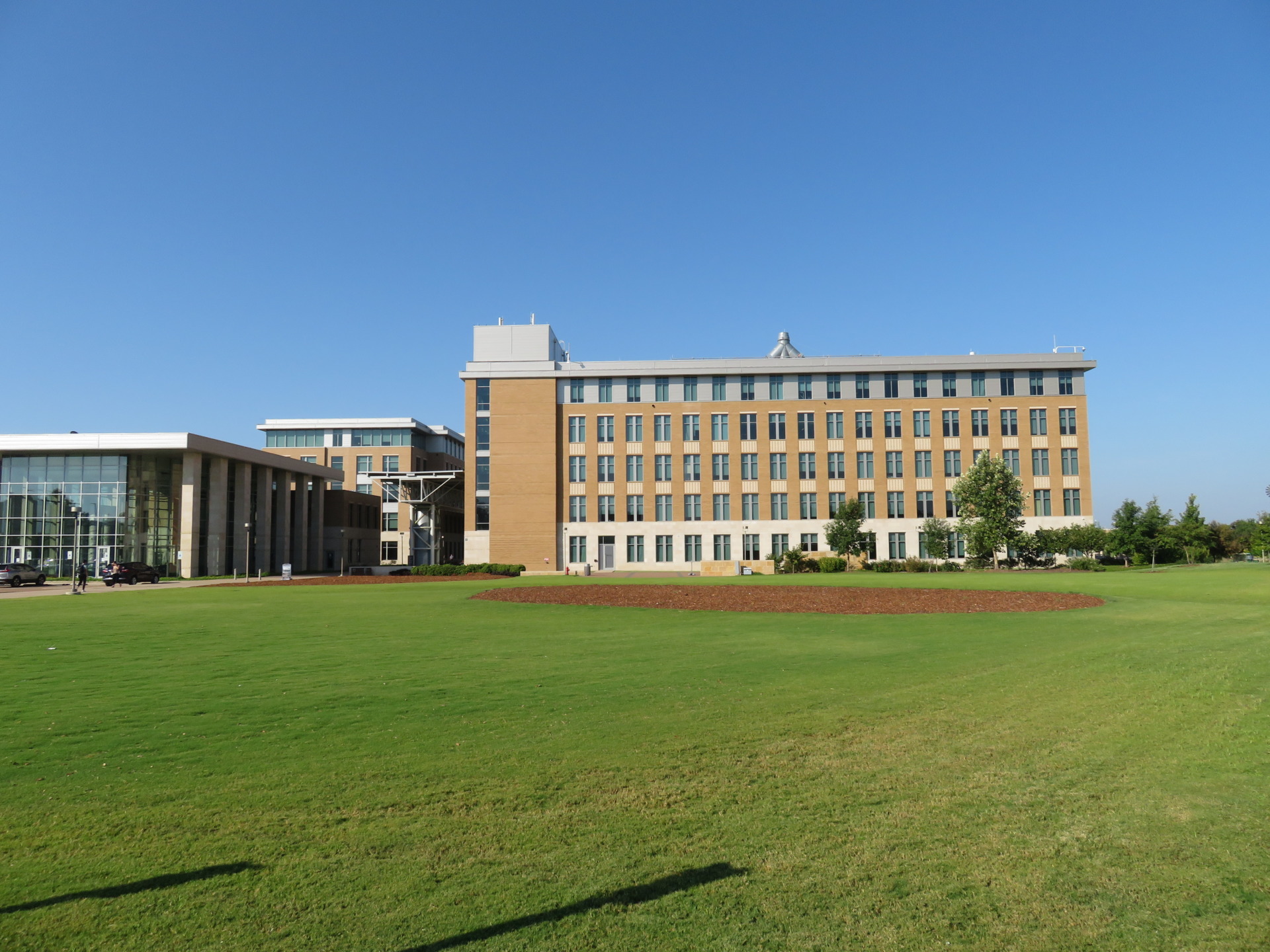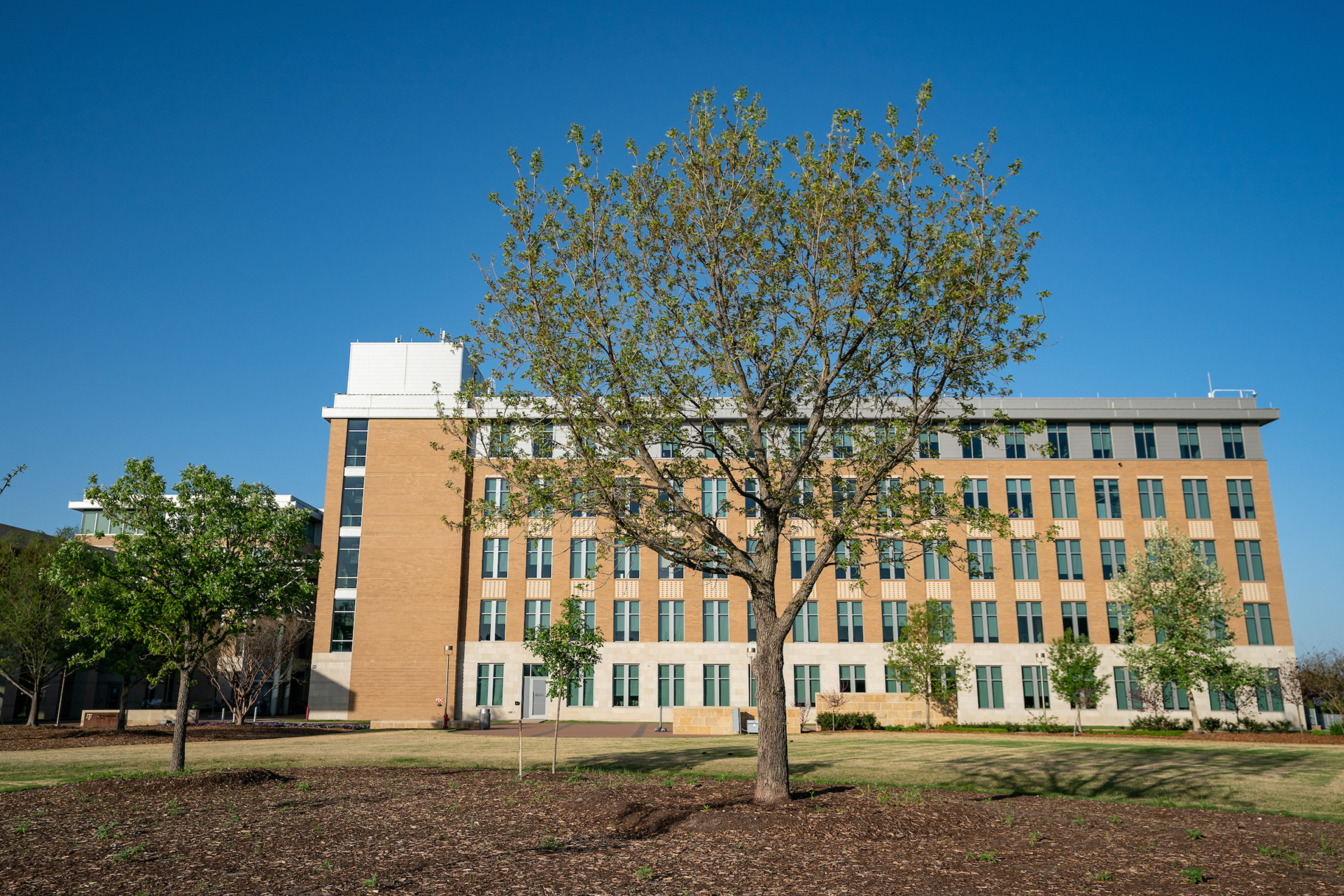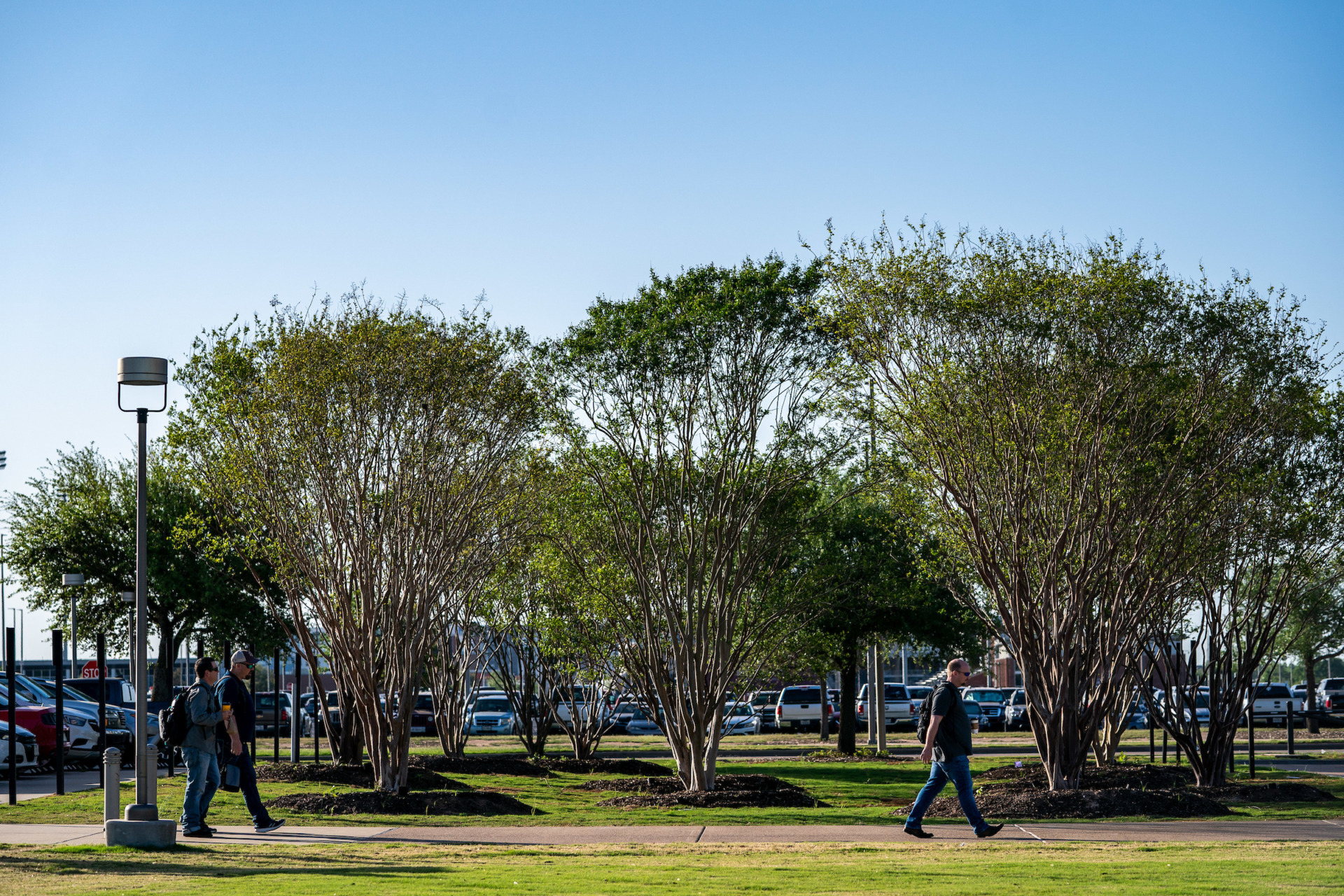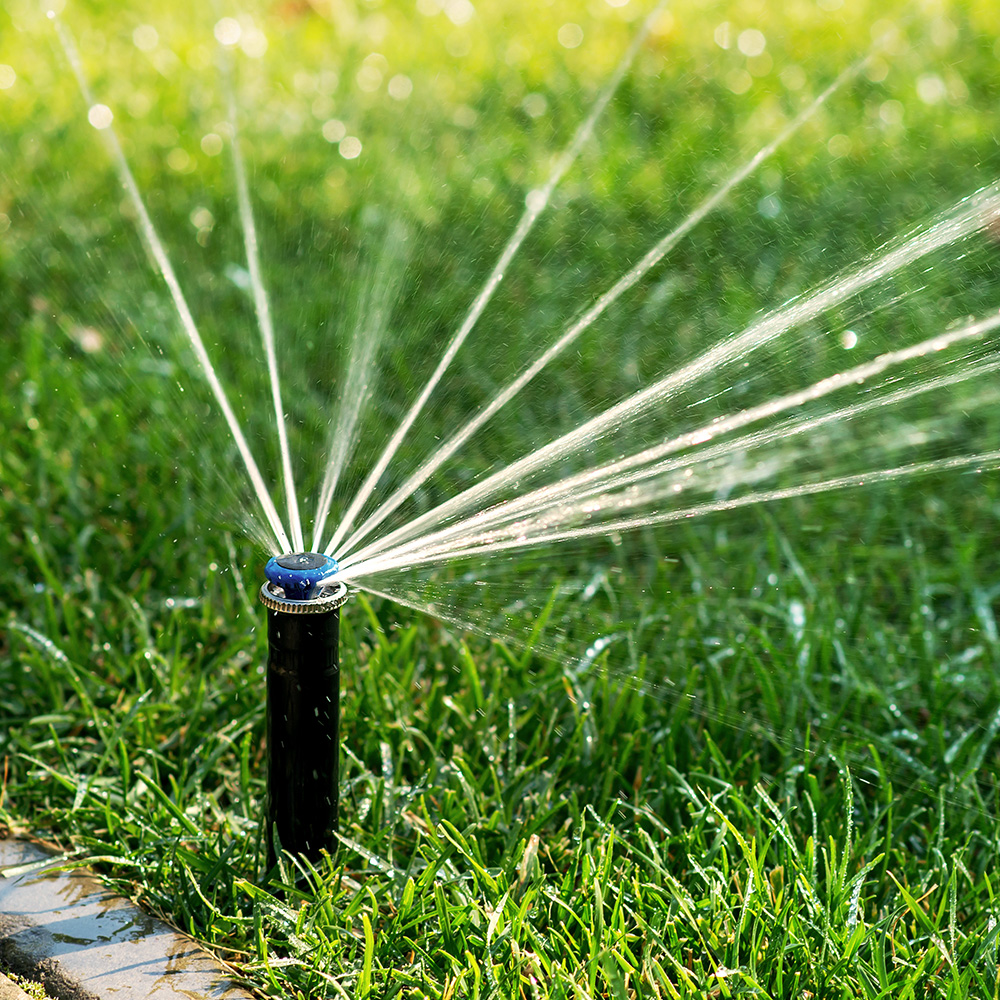Transplanted trees renew Leach Teaching Gardens
Sustainable solution preserves history and enhances The Gardens at Texas A&M University
The stately old post oaks at the entrance of the Event Lawn in the Leach Teaching Gardens at Texas A&M University had to go. Damaged by construction and record cold temperatures during Winter Storm Uri in 2021, the dead and dying trees were losing limbs and posed a safety hazard to students and visitors. So, the trees were removed, leaving the lawn rather empty and plain.

But thanks to a major tree-relocation project, the Event Lawn is ready for spring and summer events and looks better than ever. Made possible by generous donors, sustainable solutions and careful planning, the trees enhance a highly visible and much used area on the Texas A&M University west campus.
The tranquil outdoor space serves as the front door to the Leach Teaching Gardens, a venue for College of Agriculture and Life Sciences events and a gathering place for students and visitors.
Available trees made it sustainable
The solution to transforming the lawn into a scenic, enjoyable setting again was already available on the Texas A&M campus. The former horticultural gardens on Hensel Drive were scheduled to become part of a development, requiring the removal of some beautiful, mature trees planted by Texas A&M students, faculty and staff over the years.
“We thought, what better opportunity to not only replace the trees but to recycle, reuse, repurpose and increase the sustainability of The Gardens and transfer a bit of Texas A&M history,” said Michael Arnold, Ph.D., professor of landscape horticulture in the Texas A&M Department of Horticultural Sciences and director of The Gardens at Texas A&M University.
Generous donors made it possible
Funded by Tim ’82 and Amy Leach ’84 of Midland and Mark ’77 and Sarah Philpy ’84 of Boerne, the project corrected drainage issues, moved 19 large trees from across campus to the Event Lawn and created a crapemyrtle grove adjacent to the Shirley and Joe Swinbank ’74 AgriLife Center.
The Leaches are the lead donors for the 7-acre Leach Teaching Gardens, which, in addition to the Event Lawn, include 21 themed gardens, an outdoor classroom, a demonstration area and a pavilion. It is Phase I of The Gardens, which will eventually encompass a 27-acre public teaching garden that will showcase Texas A&M research and educate and inspire students and visitors.
The Philpys are friends of the Leaches, and when they attended the grand opening of the gardens in 2018, they decided to help support the endeavor.
“We knew about it, but when we were actually there, I thought, ‘This is so fabulous, so fantastic,’” Sarah Philpy said.“ There are so many areas for teaching, whether it’s the pivot irrigation system, the different flower gardens, the (Sally Young Johnson) Herb Garden, the (Marjorie Ann Klaevemann Memorial) German Heritage Garden and the different aspects of Texas culture, and the pavilion – the sky’s the limit with where this project can go.”
“After the grand opening, I told Tim we would be very interested and happy to help with a future project,” Mark Philpy said.
The tree relocation project appealed to the Philpys because of the potential to protect both beauty and natural resources.
“It saved some trees that were going to be removed, and if anybody was going to have these trees survive, it would be the people at Texas A&M,” Sarah Philpy said.
Tree-moving experts made it achievable
During the fall 2021 semester, The Gardens partnered with SSC Services for Education at Texas A&M and with Environmental Design in Houston to prepare to move the trees over the holiday break and during the first week of spring classes, while the trees were dormant.
Although moving large, mature trees is no easy feat, modern techniques have improved the overall success rate of transplantation to over 95%, making the challenge more economically feasible, Arnold said. Preparing the trees ahead of time makes a big difference in transplant success.
“The key is to start months in advance, with root pruning to stimulate new root growth within the root ball, meaning the soil that will be lifted and moved with the tree to the new location,” Arnold said. “The more of the active growing root system we can move, the more likely it will be that the tree will establish a new root system after transplanting.”

The 19 transplanted trees varied in size, both in trunk diameter and the diameter of the root ball. The trees ranged from a crapemyrtle with an 8-inch trunk diameter and a 100-inch root ball that weighed 7.5 tons to a bur oak with a 13-inch trunk diameter and a 20-ton root ball. A box 10 feet long, 10 feet wide and 4 feet high was built to contain the massive root ball for the bur oak’s relocation. It was rolled onto an 18-wheeler, transported to its new site and moved into place with the help of a crane, Arnold said.
Leach Teaching Gardens are ready for a visit
The Gardens, including the additions to the Event Lawn, are blooming for spring and ready to delight visitors of all ages. While enjoying the “new” trees, guests can take note of three primary planting areas:
- In the middle of the Event Lawn, The Gardens project team added a mixed-age bur oak grove with three large, mature bur oaks and four smaller ones. The largest bur oak in the center of the grouping was originally planted as a sapling at its former site by Arnold and a former graduate student, Garry McDonald, Ph.D., now a clinical associate professor in the Department of Horticulture at the University of Arkansas.


- Additions to the corner of the lawn near The Gardens sign and the Shirley and Joe Swinbank ’74 AgriLife Center include a cedar elm, which is native to Texas, as well as two Natchez crapemyrtles and a Nanjing Beauty cypress. The historic cypress is a hybrid of two native Texas species, the common bald cypress and the Montezuma cypress. It is one of the first of its kind brought into the U.S. from China, where it was developed as part of an urban street tree breeding program. David Creech, Ph.D., director of the Mast Arboretum at Stephen F. Austin State University, SFA, and a former student at Texas A&M, gave the tree to the Texas A&M Department of Horticultural Sciences when he was a faculty member at SFA.


- The empty space between the two parking areas in front of the Shirley and Joe Swinbank ’74 AgriLife Center is now a crapemyrtle grove with a dozen mature trees, once part of a local Brazos Beautiful project. Long-term plans are for the shaded location with its views of Kyle Field and Reed Arena to be a popular setting where students, faculty and visitors can enjoy lunch or gameday picnics.


“Because of the expertise and dedication of The Gardens project team, the transplanted trees are leafing out, and the Event Lawn has been transformed from bare and bleak to scenic and shaded,” Arnold said.
“We could not have transformed this space as we did without the generous support of Tim and Amy Leach and Mark and Sarah Philpy. This sustainable urban forest is part of creating a green campus and will be a great addition to the College of Agriculture and Life Sciences tailgates and other events on the lawn.”
To learn how you can leave your legacy at the Texas A&M College of Agriculture and Life Sciences, contact Bailey Allison at [email protected].





